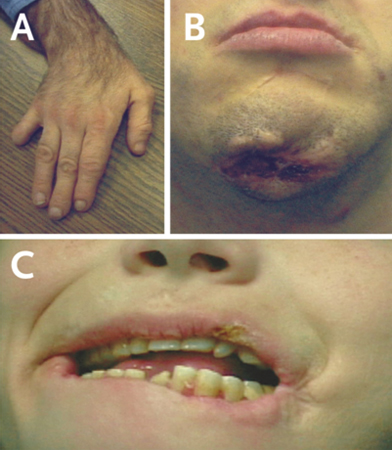Resumo
Definição
História e exame físico
Principais fatores diagnósticos
- idade <12 meses
- cristais de "areia" laranja nas fraldas
- nefrolitíase
- sinais piramidais
- atrofia testicular
- sexo masculino
- atraso do desenvolvimento
- movimentos involuntários
- hipotonia generalizada
- comportamento autolesivo, geralmente em idade <5 anos
- comportamento autolesivo com foco na boca e nos dedos
- distúrbios cognitivos
- retardo do crescimento
- distonia de ação
- história familiar positiva
Fatores de risco
- história familiar positiva
Investigações diagnósticas
Primeiras investigações a serem solicitadas
- nível de ácido úrico sérico
- excreção de ácido úrico na urina de 24 horas
- análise genética da hipoxantina-guanina fosforibosiltransferase (HPRT)
- atividade da enzima hipoxantina-guanina fosforibosiltransferase (HPRT)
Investigações a serem consideradas
- ressonância nuclear magnética (RNM) cranioencefálica
Algoritmo de tratamento
todos os pacientes
Colaboradores
Autores
Jasper E. Visser, MD, PhD
Neurologist
Department of Neurology
Radboud University Nijmegen Medical Center
Nijmegen
The Netherlands
Declarações
JEV has received research grants from the Dutch Research Council (NWO), the Dutch Brain Foundation, the National Institute for Neurological Diseases and Stroke (NINDS) at the National Institutes of Health (NIH), the LND Famiglie Italiane ODV, and the University of Pennsylvania Orphan Disease Center in partnership with the Love Never Sinks Organization to conduct scientific research relevant to this topic.
H. A. Jinnah, MD, PhD
Professor
Departments of Neurology and Human Genetics
Emory University
Atlanta
GA
Declarações
HAJ has served on the Scientific Advisory Boards for the Lesch-Nyhan Syndrome Children's Research Foundation in the US and for Lesch-Nyhan Action in France. He has received grant support from the NIH, the Lesch-Nyhan Syndrome Children's Research Foundation, and Psyadon Pharmaceuticals for research on Lesch-Nyhan disease.
Revisores
Stephen G. Reich, MD
Professor
Department of Neurology
The University of Maryland School of Medicine
Baltimore
MD
Declarações
SGR is co-author of a study referenced in this topic.
Pavel Seeman, MD, PhD
Associate Professor (Doc)
Head of the DNA Laboratory
Department of Child Neurology
Second School of Medicine
Charles University
Prague
and University Hospital Motol
Prague
Czech Republic
Declarações
PS declares that he has no competing interests.
Créditos aos pareceristas
Os tópicos do BMJ Best Practice são constantemente atualizados, seguindo os desenvolvimentos das evidências e das diretrizes. Os pareceristas aqui listados revisaram o conteúdo pelo menos uma vez durante a história do tópico.
Declarações
As afiliações e declarações dos pareceristas referem--se ao momento da revisão.
Referências
Principais artigos
Lesch M, Nyhan WL. A familial disorder of uric acid metabolism and central nervous system function. Am J Med. 1964;36:561-570. Resumo
Visser JE, Bar PR, Jinnah HA. Lesch-Nyhan disease and the basal ganglia. Brain Res Brain Res Rev. 2000 Apr;32(2-3):449-75. Resumo
Jinnah HA, Ceballos-Picot I, Torres RJ, et al; Lesch-Nyhan Disease International Study Group. Attenuated variants of Lesch-Nyhan disease. Brain. 2010 Mar;133(Pt 3):671-89.Texto completo Resumo
Fu R, Ceballos-Picot I, Torres RJ, et al; Lesch-Nyhan Disease International Study Group. Genotype-phenotype correlations in neurogenetics: Lesch-Nyhan disease as a model disorder. Brain. 2014 May;137(Pt 5):1282-303.Texto completo Resumo
Jinnah HA, Visser JE, Harris JC, et al. Delineation of the motor disorder of Lesch-Nyhan disease. Brain. 2006 May;129(Pt 5):1201-17.Texto completo Resumo
Artigos de referência
Uma lista completa das fontes referenciadas neste tópico está disponível para os usuários com acesso total ao BMJ Best Practice.

Diagnósticos diferenciais
- Paralisia cerebral
- Doenças com atraso no desenvolvimento
- Doenças com distonia em pouca idade
Mais Diagnósticos diferenciaisConectar-se ou assinar para acessar todo o BMJ Best Practice
O uso deste conteúdo está sujeito ao nosso aviso legal